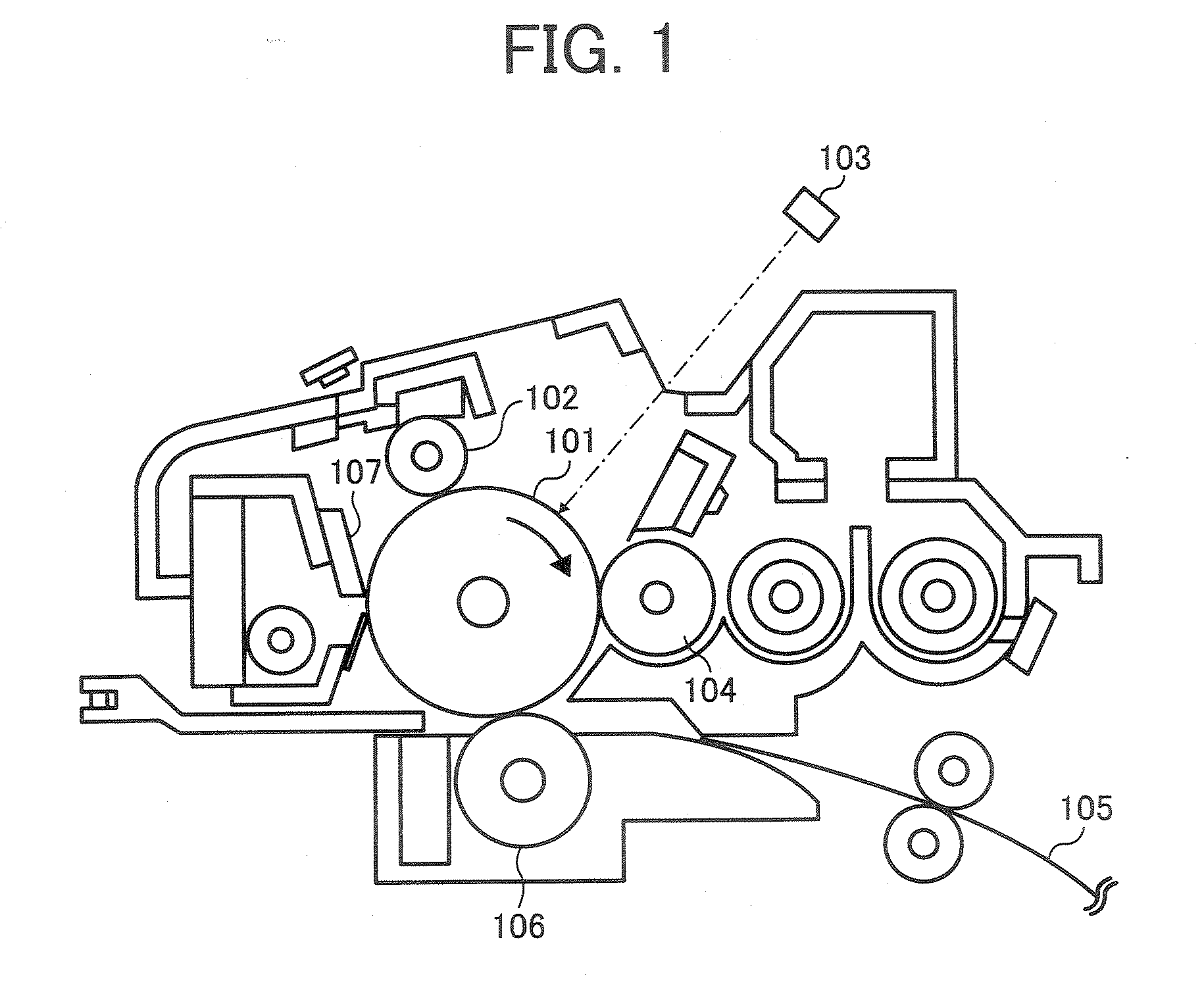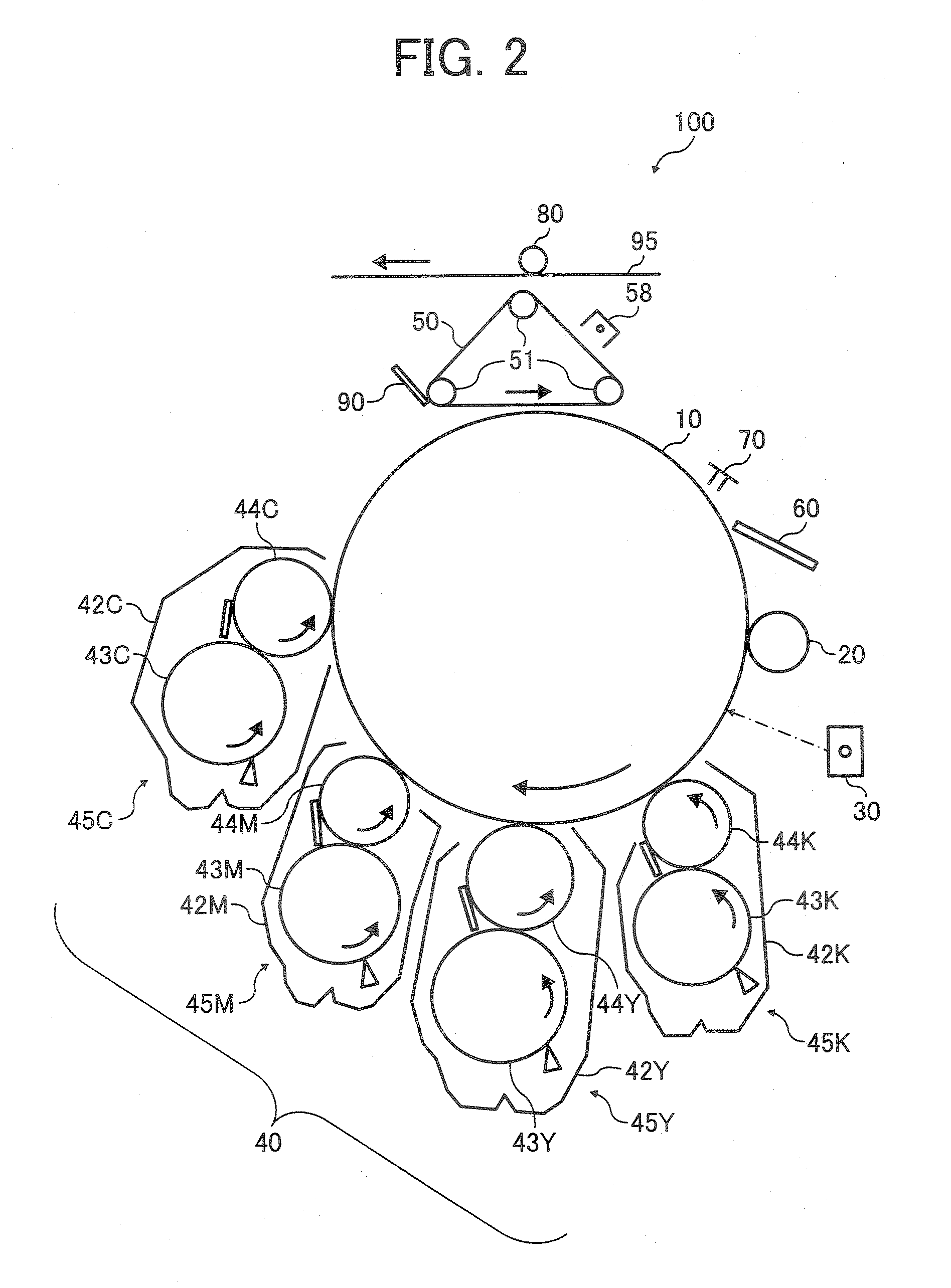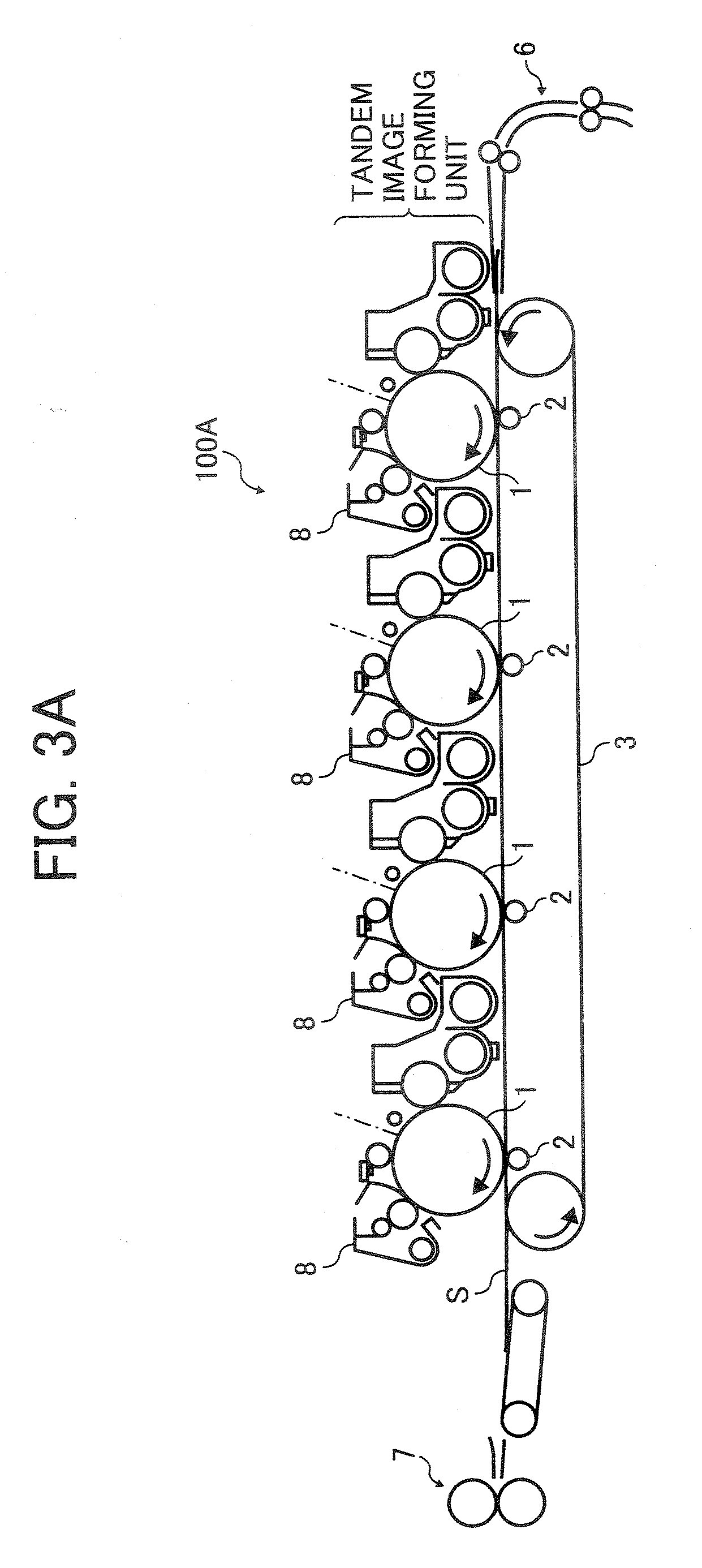Toner, method for manufacturingthe toner, and developer, image forming method, image forming apparatus and process cartridge using the toner
- Summary
- Abstract
- Description
- Claims
- Application Information
AI Technical Summary
Benefits of technology
Problems solved by technology
Method used
Image
Examples
example 1
[0235]An aqueous solution in which 5 g of a polyvinyl alcohol (KURARAY POVAL 205 from Kuraray Co., Ltd.) is dissolved in 555 g of water is mixed with a mixture including 184 g of methyl methacrylate, 16 g of trimethylolpropane trimethacrylate, 1 g of lauryl peroxide, 100 g of methyl isobutyl ketone, and 2 g of a butyl methacrylate resin at a revolution of 1,000 rpm using a TK HOMOMIXER, to prepare a dispersion of a monomer mixture. The thus prepared dispersion is contained in a four-neck flask equipped with a stirrer, a condenser, a thermometer, and a nitrogen inlet pipe, and then heated for 3 hours at 60° C. while agitated under nitrogen gas airflow, to prepare a suspension liquid. The suspension liquid is cooled to room temperature, and then filtered and washed with water. The filtered cake is dried for 24 hours at 110° C. Thus, particulate porous cross-linked resin (A) is prepared.
[0236]The particulate porous cross-linked resin (A) has a volume average particle diameter of 29 μm ...
example 2
[0238]The procedure for preparation of the particulate porous cross-linked resin (A) in Example 1 is repeated except that the revolution of the TK HOMOMIXER is changed. Thus, the particulate porous cross-linked resin (B) is prepared.
[0239]The particulate porous cross-linked resin (B) has a volume average particle diameter of 38.0 μm determined by COULTER MULTISIZER II (manufactured by Coulter Electrons Inc.), a specific surface area of 10 m2 / g determined by nitrogen multipoint BET method, a total volume of pores of 0.06 cc / g determined by mercury intrusion porosimetry, and diameters of the pores of from 0.15 to 2.0 μm determined by SEM observation.
[0240]The particulate porous cross-linked resin (B) is mixed with the pre-toner (1) so that the mixture includes the particulate porous cross-linked resin (B) in an amount of 1.0% by weight. Then the mixture is sieved with a 795 mesh to remove the particulate porous cross-linked resin (B). Thus, a toner (2) is prepared.
example 3
Preparation of Master Batch
[0241]The following components are mixed with a HENSCHEL MIXER (manufactured by Mitsui Mining Co., Ltd.).
Water1200 partsCarbon black 540 parts(PRINTEX 35 from Degussa AG, having DBPabsorption value of 42 ml / 100 mg and pH of 9.5)Low-molecular-weight polyester (1)1200 parts
[0242]The mixture is kneaded for 30 minutes at 150° C. with a two-roll mill, and then subjected to rolling and cooling. The rolled mixture is pulverized using a pulverizer (manufactured by Hosokawa Micron Corporation) Thus, a master batch (2) is prepared.
Preparation of Toner Constituent Dispersion
[0243]In a vessel equipped with a stirrer and a thermometer, 378 parts of the low-molecular-weight polyester (1), 110 parts of a carnauba wax, 22 parts of a charge controlling agent (a metal complex of salicylic acid E-84 from Orient Chemical Industries, Ltd.), and 947 parts of ethyl acetate are contained. The mixture is heated to 80° C. for 5 hours while agitated, and then cooled to 30° C. over a...
PUM
| Property | Measurement | Unit |
|---|---|---|
| Length | aaaaa | aaaaa |
| Length | aaaaa | aaaaa |
| Percent by mass | aaaaa | aaaaa |
Abstract
Description
Claims
Application Information
 Login to View More
Login to View More - R&D
- Intellectual Property
- Life Sciences
- Materials
- Tech Scout
- Unparalleled Data Quality
- Higher Quality Content
- 60% Fewer Hallucinations
Browse by: Latest US Patents, China's latest patents, Technical Efficacy Thesaurus, Application Domain, Technology Topic, Popular Technical Reports.
© 2025 PatSnap. All rights reserved.Legal|Privacy policy|Modern Slavery Act Transparency Statement|Sitemap|About US| Contact US: help@patsnap.com



